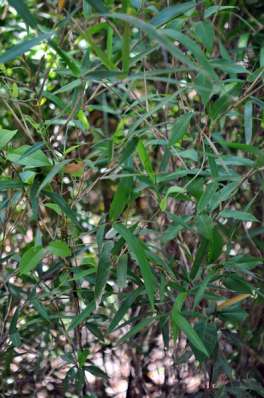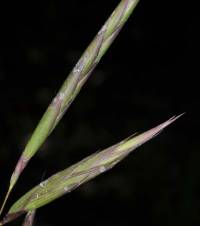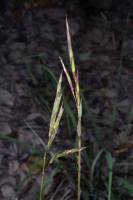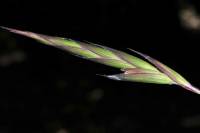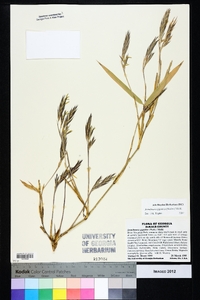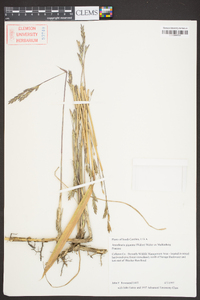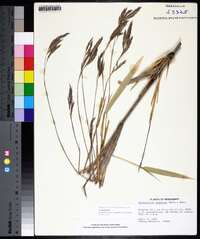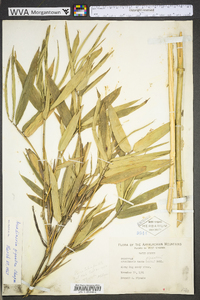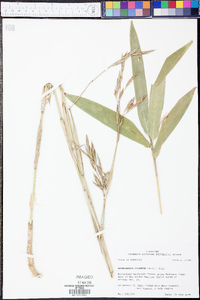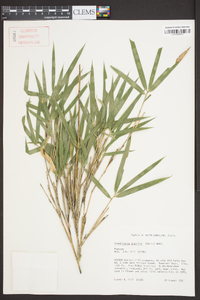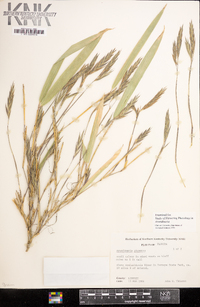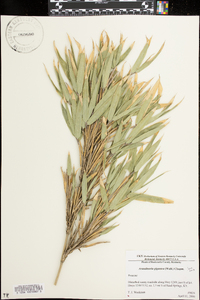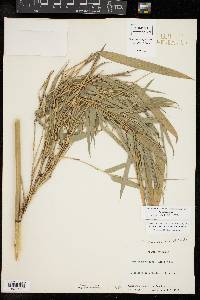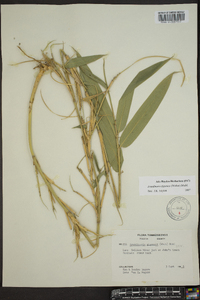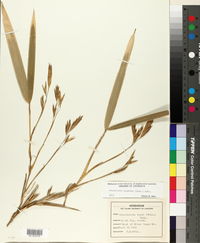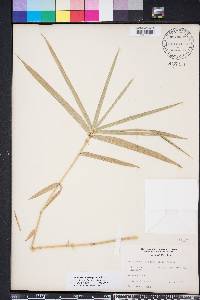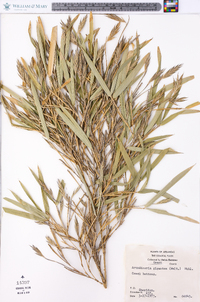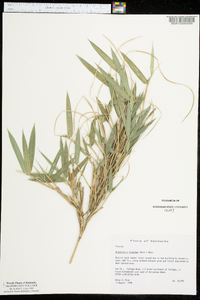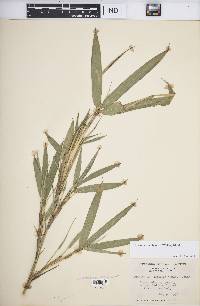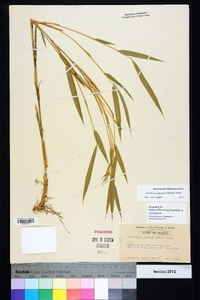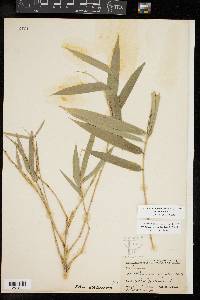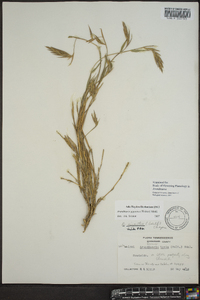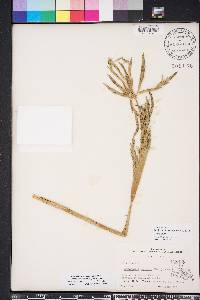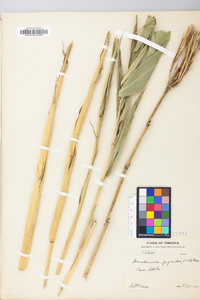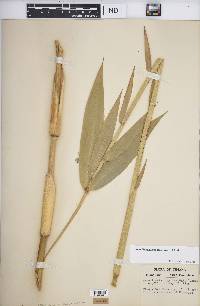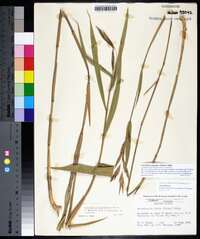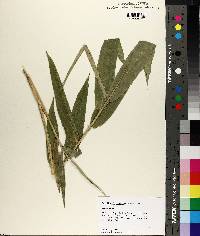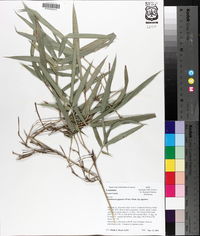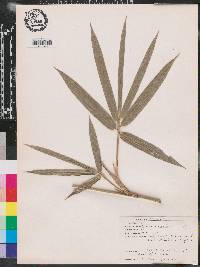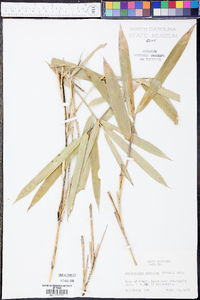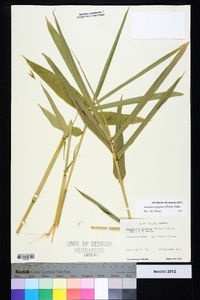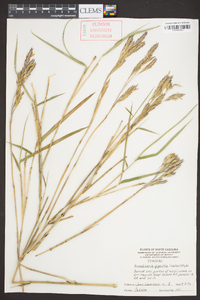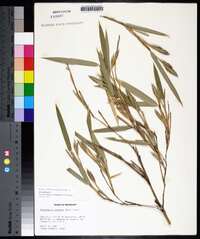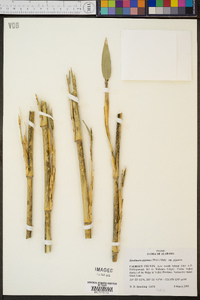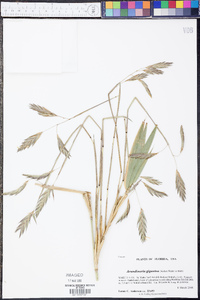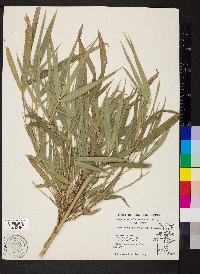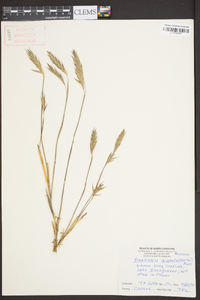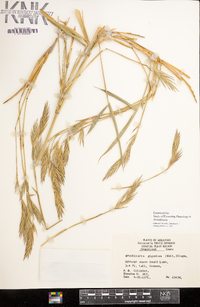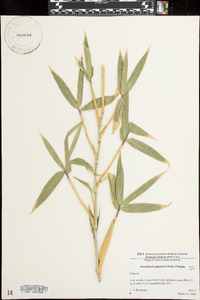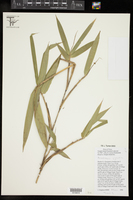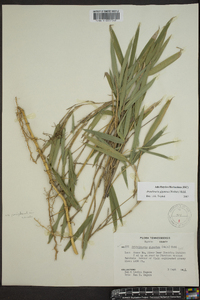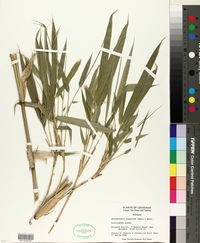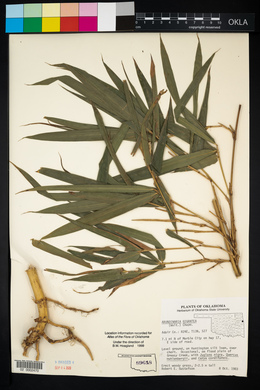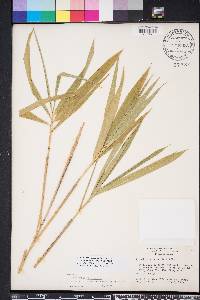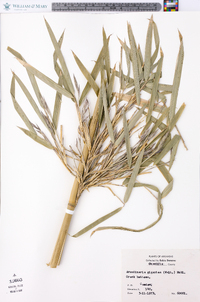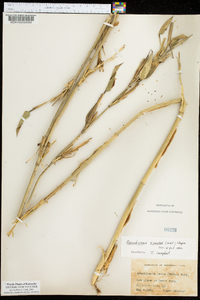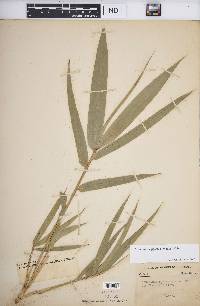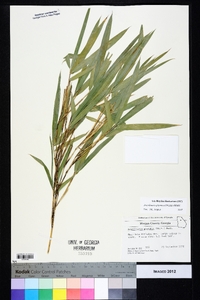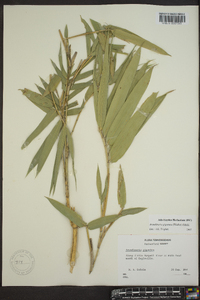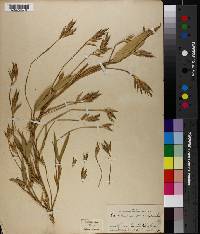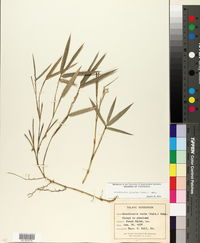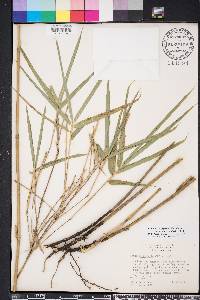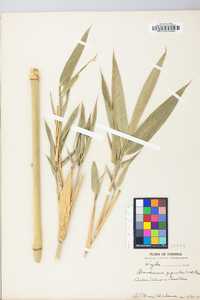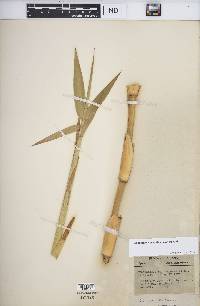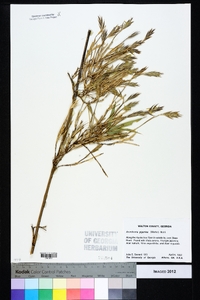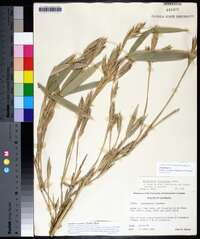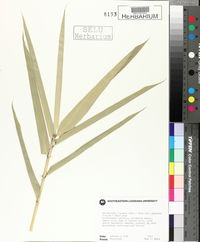Arundinaria gigantea
|
|
|
|
Family: Poaceae
Giant Cane, more...River Cane
[Arundinaria bambusina (Fisch.) Trin., moreArundinaria gigantea var. gigantea (Walter) Muhl., Arundinaria macrosperma , Arundinaria macrosperma var. arborescens Munro, Arundinaria tecta var. distachya Rupr., Arundinaria tecta var. pumila (Nutt.) Rupr., Arundo gigantea Walter, Miegia gigantea (Walter) Nutt., Miegia macrosperma (Michx.) Pers.] |
Rhizomes normally remaining horizontal, sometimes hollow-centered, air canals absent. Culms 2-8 m tall, to 3 cm thick; internodes typically sulcate distal to the branches. Culm leaves deciduous; sheaths 9-15 cm; fimbriae 2.2-7 mm; blades 1.5-3.5 cm. Topknots of 6-8 leaves; blades 16-24 cm long, 2-3.2 cm wide, lanceolate to ovate-lanceolate. Primary branches to 25 cm, erect or nearly so, with 0-1 compressed basal internodes, lower elongated internodes flattened in cross section. Foliage leaves: abaxial ligules usually ciliate, sometimes glabrous; blades subcoriaceous, persistent, evergreen, 8-15 cm long, 0.8-1.3 cm wide, bases rounded, abaxial surfaces glabrous or pubescent, strongly cross veined, adaxial surfaces glabrous or almost so. Spikelets 4-7 cm, greenish or brownish, with 8-12 florets. Glumes unequal, glabrous or pubescent, lowest glumes obtuse to acuminate or absent; lemmas 1.2-2 cm, usually appressed-hirsute to canescent, sometimes pubescent only towards the base and margins. Caryopses oblong, beaked, without a style branch below the beaks. 2n = 48. Arundinaria gigantea forms extensive colonies in low woods, moist ground, and along river banks. It was once widespread in the southeastern United States, but cultivation, burning, and overgrazing have destroyed many stands. Culms to 3+ m from a system of rhizomes, forming dense brakes; sheaths glabrous or hairy, ciliate, truncate at the summit and bearing a few long deciduous bristles on each angle; blades 10-30 cm, usually hairy beneath, sometimes also above; aerial stems monocarpic, sometimes some of them flowering the first year, but others only after several years, then forming fastigiately branched panicles on the old wood; first glume to 6 mm, or wanting; second glume to 12 mm; lemmas acuminate, the lower 15-20 mm; 2n=48. Damp woods, wet ground, and swamps; Md. and Va. to s. O. and s. Ill., s. to Fla. and Tex. (A. macrosperma; A. tecta) Gleason, Henry A. & Cronquist, Arthur J. 1991. Manual of vascular plants of northeastern United States and adjacent Canada. lxxv + 910 pp. ©The New York Botanical Garden. All rights reserved. Used by permission. From Flora of Indiana (1940) by Charles C. Deam This species is restricted to southern Indiana. I have found it only in the counties bordering the Ohio and Wabash Rivers. Kriebel, however, found it along Beaver Creek near Huron, Lawrence County, and there is a place named "cane marsh" in Greene County which indicates that it, at one time, did occur in that county. This species is usually found in lowlands that are periodially inundated. I have seen it on rocky wooded slopes, however, and on the top of the bluff of the Ohio River, where it was 200 feet above the water. In my opinion fire and grazing have been instrumental in limiting its distribution on the uplands. ...... Indiana Coefficient of Conservatism: C = 5 Wetland Indicator Status: FACW Deam (1929): The habitat of this species is usually given as "alluvial banks of streams." I am not acquainted with this species outside of Indiana but I have observed it in this state in many places for many years. Its preferred habitat is lowlands which are usually inundated once or more annually. It is commonly associated with pecan, shellbark hiciory, white elm, and sugarberry (Celtis laevigata). It is not confined to the bottoms along the larger streams but has penetrated the interior for not less than 15 miles along the small tributaries. Neither is it confined to the bottomland, as I have collected it from a rocky wooded slope along the Ohio river; I have seen it on the top of a bluff 200 feet high along the Ohio River east of Fourteen-mile Creek; I have seen it on a beech ridge fully 80 feet high in Perry County just north of Cannelton, and in the same county on a ridge about 75 feet high along Deer Creek. It has become local and occurs in limited areas except in the lower Wabash bottoms where it is never pastured and seldom burned over. Collett in his geological report on Harrison Couonty (Ind. Geol. Rpt. 8, 9, & 10. 1879) says that "the southern cane ... formerly covered this hill (Eversole Bluff, over 300 feet high) with a rank groowth from 10-15 feet high, in which horse thieves of 1810 corraled their stolen property." This species seldom flowers and fruits [This species flowered in Indiana in 1929]. Mohr (Contr. US Nat. Herb 6:103. 1901) says: "In light of experience, it is presumed that a period of not less than forty to fifty years has to pass before propagation of this plant by sexual reproduction takes place." [In his autobiography, Francis D. Bolton (1823-1900) of New Harmony, writes about Fox Island (the ferry landing of the Wabash River opposite New Harmony) and Cut-off Island (in the Wabash about one mile south of New Harmony)]. "Fox Island was full of game from my earliest recollection up to the year 1850, when the cane, with which it was covered, went to seed and then all died. The seed grew in clustered and resembled oats, and all the animals and fowls got rolling fat from eating the seed. This food imparted a delicious flavor to the flesh and we feasted that summer and fall. But this was the end of the cane on Fox Island, as it all died the following winter and was either carried off by high water or rotted on the ground. From this time game began to decrease...." [Cut-off Island] was covered by a heavy growth of timber and cane; the latter ... went to seed in 1850, and also died that winter. "... cane brakes were the home of deer and wild turkey. Cattle and mules could live and take care of themselves in the cane brakes all the year around...." "One cause of the river's change was the destruction of cane, the roots of which protected the bank from washing." |
|
|
|

